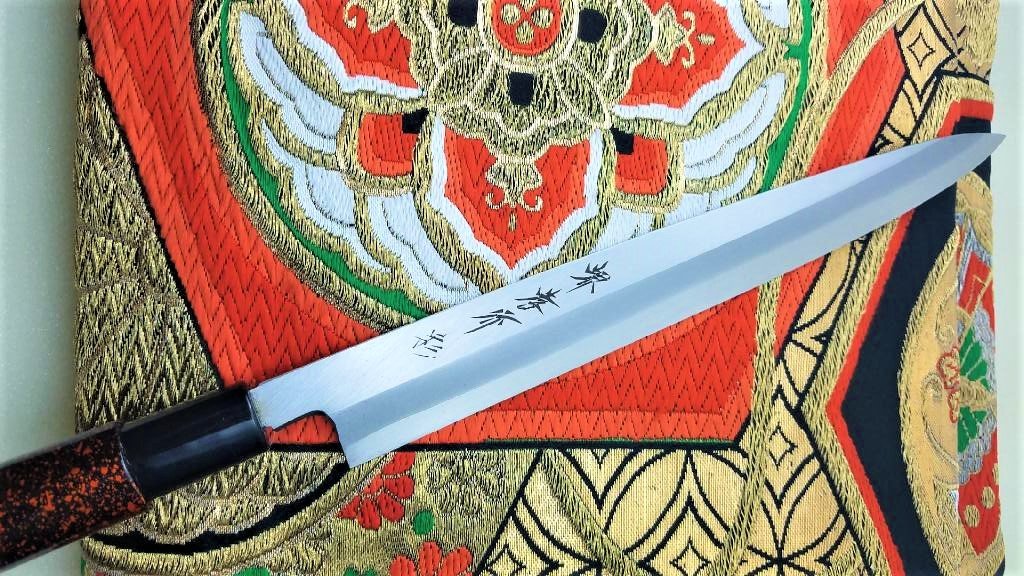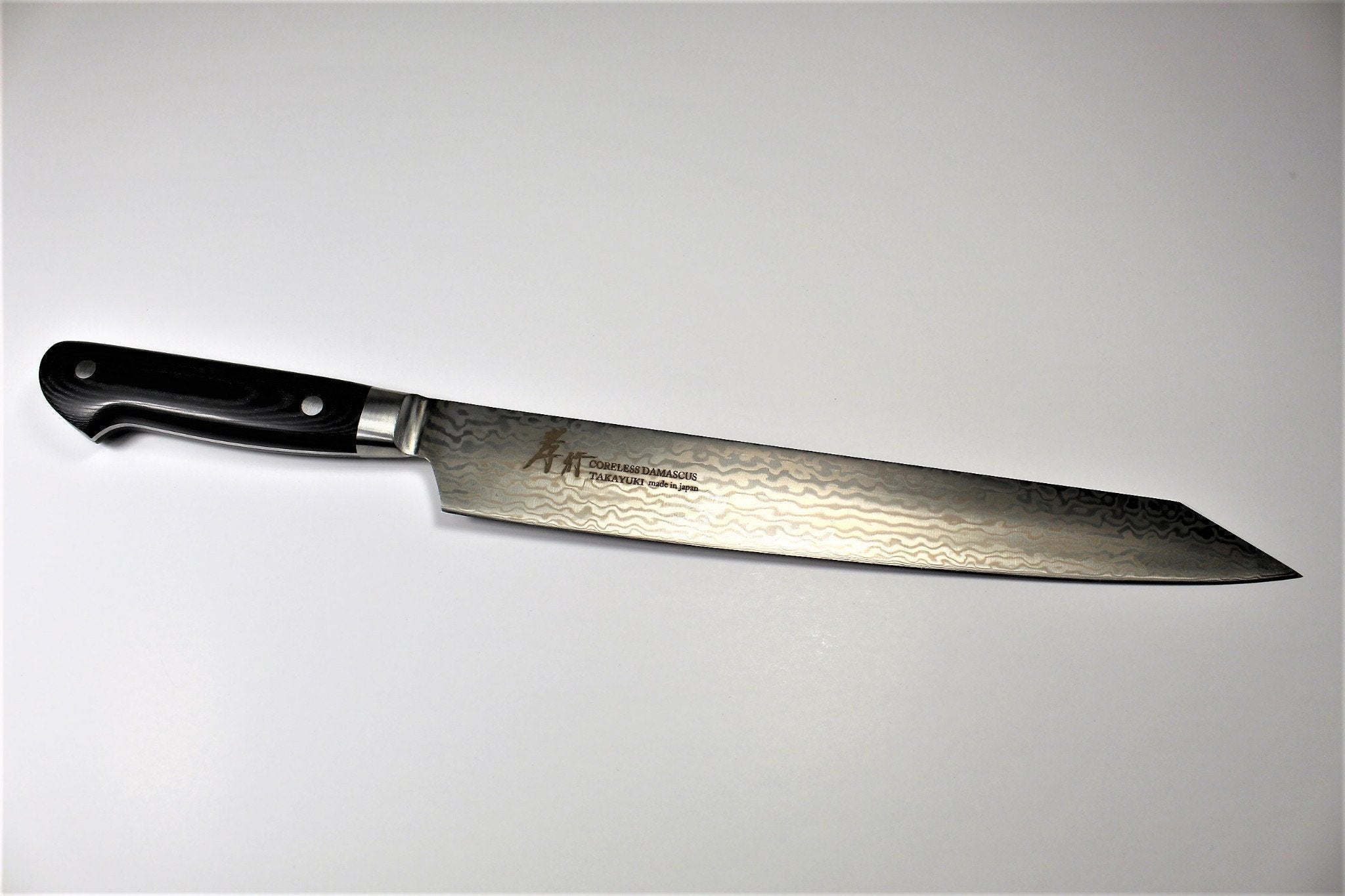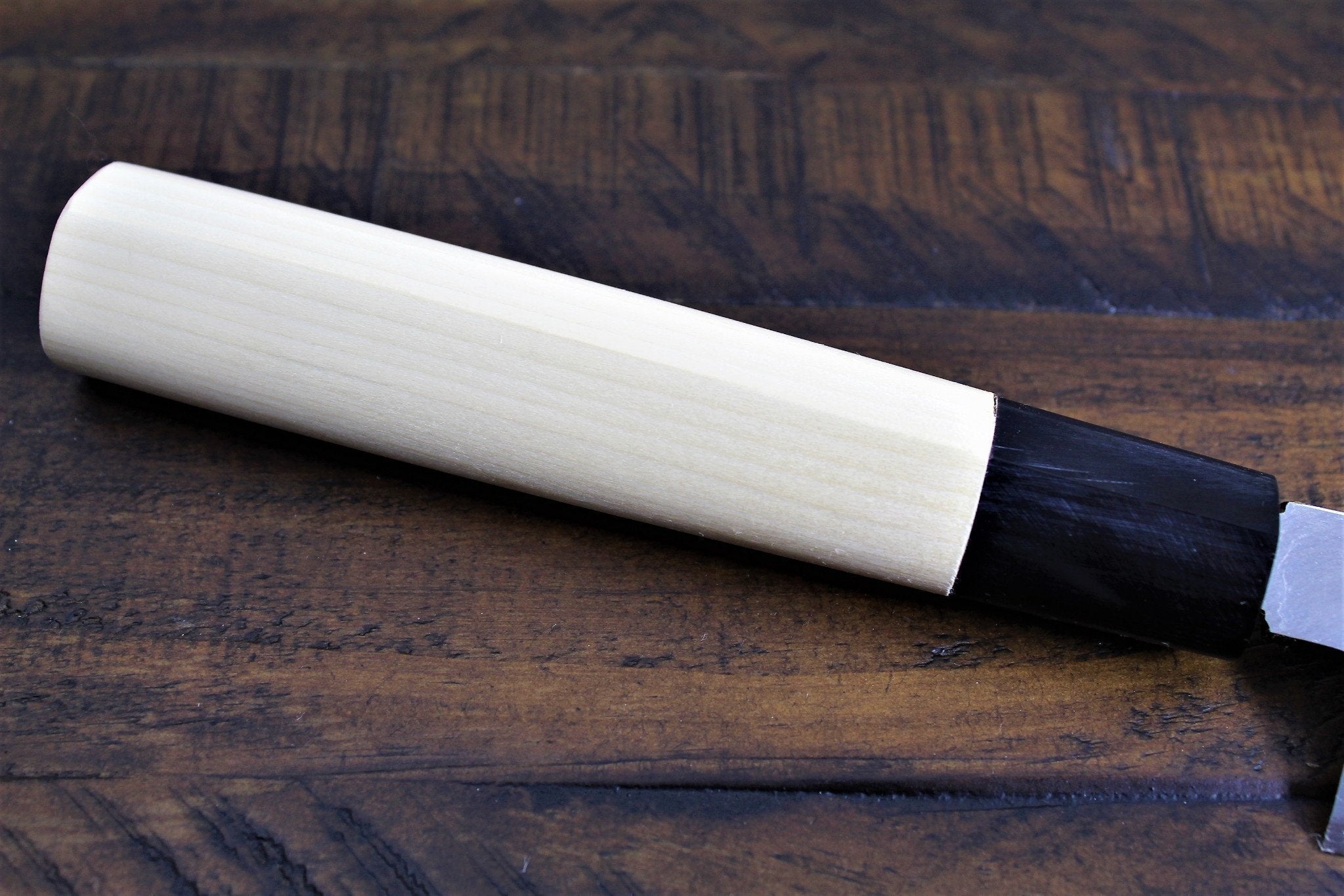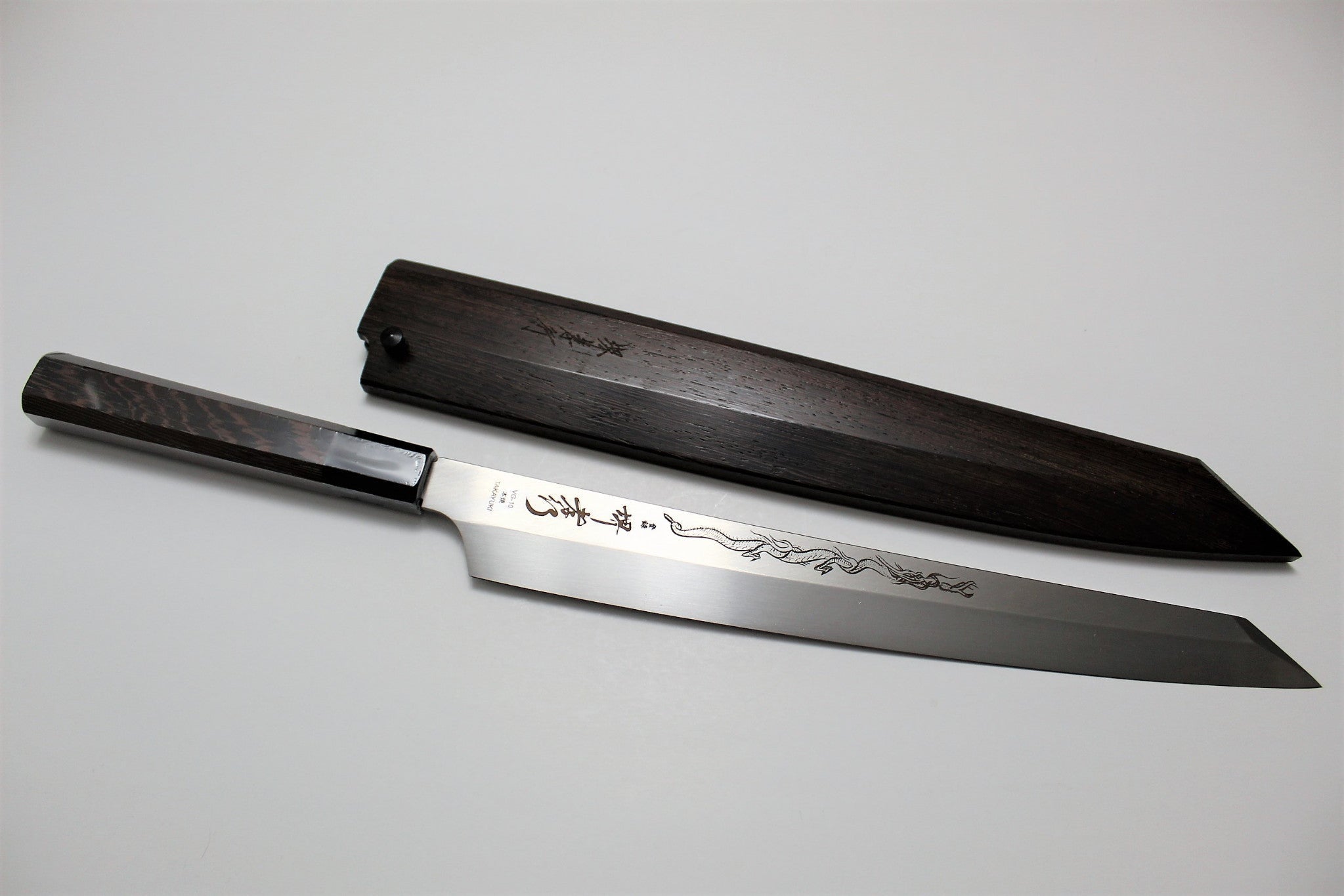Filters
History of the Yanagiba Knife
The Yanagiba originated in the Kansai region during the Edo period (1603-1868). Its name roughly translates to “willow leaf blade,” which accurately describes the blade’s long and slender leaf-like shape.
In the west of the country, in the Osaka and Kyoto regions, the knife is often referred to as the Shobu (“iris leaf”). It is said to be a natural evolution of the Katana, the Japanese sword, owing both to its shape and its role as an excellent slicer.
Today, the Yanagiba knife is a staple of any Japanese kitchen, and is much revered by sushi chefs worldwide for its unrivaled ease in preparing fish and other meats.
Explore Exquisite Japanese Craftsmanship at Hasu-Seizo
Japanese kitchen knives are rightly considered as some of the best in the world. They use high-quality materials and crafting them is a labor of love for traditional Japanese artisans across the country.
If you should ever venture through a knifemaking village in Japan, perhaps in Echizen in the Fukui Prefecture or near our own family establishment in Sakai, Osaka, you will sometimes hear or even see master bladesmiths at work – forging and hammering steel blades, creating one of the knives you see here at Hasu-Seizo.
While a fleeting pass by the scene may not make this obvious, what you’re observing is the product of centuries worth of tradition passed down from generation to generation being performed in front of you.
Browse the results of storied Japanese craftsmanship at Hasu-Seizo. Our catalog contains a wide range of traditional Japanese kitchen knives, including Yanagiba, Sujihiki, Gyuto, Petty, Deba, Nakiri, and more.
History of the Yanagiba Knife
The Yanagiba originated in the Kansai region during the Edo period (1603-1868). Its name roughly translates to “willow leaf blade,” which accurately describes the blade’s long and slender leaf-like shape.
In the west of the country, in the Osaka and Kyoto regions, the knife is often referred to as the Shobu (“iris leaf”). It is said to be a natural evolution of the Katana, the Japanese sword, owing both to its shape and its role as an excellent slicer.
Today, the Yanagiba knife is a staple of any Japanese kitchen, and is much revered by sushi chefs worldwide for its unrivaled ease in preparing fish and other meats.
Explore Exquisite Japanese Craftsmanship at Hasu-Seizo
Japanese kitchen knives are rightly considered as some of the best. . . Show More >





























